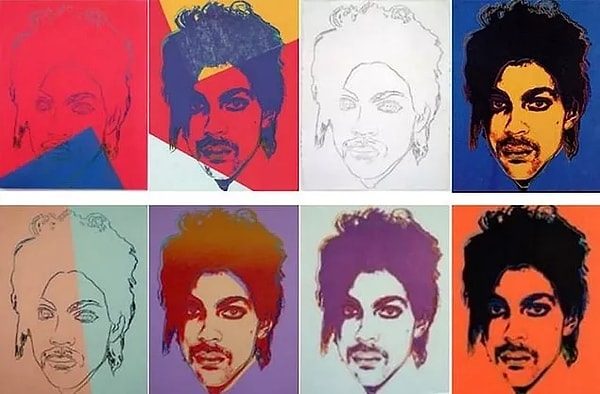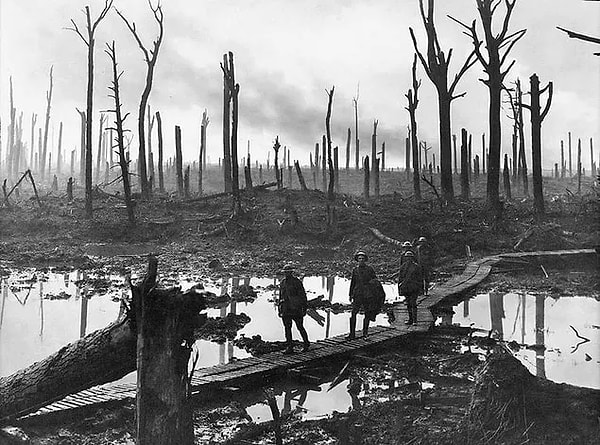Beyond the Porcelain: How Duchamp's Urinal Changed Art Forever
Duchamp's urinal, originally titled 'Fountain', represents a departure from traditional works that we commonly associate with art. Yet, it is precisely this quality that makes the urinal named 'Fountain' one of the most significant works that have transformed the course of art history. It is for this reason that Marcel Duchamp is celebrated as the artist who brought about a revolution in the history of art, all with a humble urinal. Duchamp's Fountain stands as a testament to the idea that art is not necessarily confined to aesthetic beauty or technical skill but can also exist as a provocative and thought-provoking commentary on the very nature of art itself.
In 1501, when Florence was once again a republic, Michelangelo was commissioned to make a statue of David for the Florence Cathedral.

This statue of David was expected to embody the spirit, democracy and values of the city.
Unlike Michelangelo, Duchamp was an individual artist who made provocative works. We know Duchamp by a "urinal" that he sent to an art exhibition with an autograph on it (not even his own signature). It's weird, but it's real.

Marcel Duchamp, who was living in America at that time, presented his work 'Fountain' (a mass-produced urinal) to the first exhibition of the New York Society of Independent Artists under the signature of Richard Mutt in 1917.
We can call this urinal the starting point of pop art, which we know with Andy Warhol.

However, Duchamp, like Warhol, unfortunately did not see the value he deserved because he did not earn millions of dollars by criticizing the point where art had come and selling these pop art works.
Although it is often asked why Duchamp made such a work, there is a fact that this urinal was quite successful in influencing other artists, and we can even safely say that it was a work that changed the history of art.

If you look, it's just a urinal. But in reality, it is the most important factor that started modern art.
Another element that gradually finished art was the photography. The French poet Charles Baudelaire considered photography a potential threat to art in the 1860s.

What once only artists could do, now everyone with a camera could do.
Duchamp was very impressed by this photo of Étienne-Jules Marey.

On top of this, he also made experiments on photography, including the "Five-Way Portrait".

We can clearly see how photography affects art in Duchamp's irreverent L.H.O.O.Q.

In fact, L.H.O.O.Q. painfully puts this fact in our eyes as if it were a mockery.
The once limited supply of art was now unlimited thanks to photography. Anyone who wanted could easily have a print of the Mona Lisa or any famous painting.

Masterpieces that used to be quite difficult to see were now everywhere. Even on postcards...
When this happened, artists began to ask themselves: 'When it's so easy to access and own works now, why should we make new ones?'
They're not so wrong, do you think?
The 'Fountain' created by Duchamp was one of those "ready-made" works of art that take everyday objects and simply give them the name of art. And then it carried on.

The 'Fountain' created by Duchamp was one of those 'ready-made' works of art that take everyday objects and simply give them the name of art. And then it carried on.
People very rightly began to point out that Duchamp's Fountain (and many modern arts that followed it) did not require any skills.
Actually, they were quite right, and that's the point.
The individual skills of the artists had been swallowed up by the possibilities of industrial production.
Another element that shook the art world as much as photography was these industrial productions.

Objects that were once special and created by only a few artisans have now become everyday items that everyone can buy and take home, which can be found in large stores.
For Duchamp, on the other hand, it was intellectual courage rather than skill that would define modern art and the artist.

There was no longer much need for artists anymore. Because the public already had these 'masterpieces'.
Marcel Duchamp, like most contemporary artists, was asking the same question.
What was the role of the artist in modern society? They had been challenged and perhaps even displaced by photography.
Ready-made art was also the best way to respond to this.
While Duchamp was exhibiting his intellectual art in New York, war was raging in his homeland, France, and the rest of Europe.

Nothing would ever be the same again. However, it would not be right to attribute this change in art only to the war.
The First World War was a complete betrayal for many people. Their world, in which they were convinced of their art, culture and values, had suddenly turned into a conflict of violence and destruction that they could not even imagine.

Duchamp soon became involved in the Dadaist movement, which was born in response to World War I.

Dadaism was an artistic movement that was born during the First World War as a protest against the barbarism of war
Of course, we are not saying that works like 'Fountain' appeared because of what happened in the world. As a result, the Surrealists also developed as a reaction to the First World War. The Surrealists continued to paint using the methods of traditional art.

So everyone's reaction to the events was different.
Although the reactions are different, it is also an undeniable fact that art has evolved in one way or another.
Duchamp's 'Fountain' has been a controversial topic since its creation: what was the fountain? Is it a great work of art or just a mass-produced urinal?

There were even those who did not consider the 'fountain' to be art. Of course, it can't even be compared to Michelangelo's David.
But, nevertheless, it seems that we need to recognize that it is a work that has radically changed the history of art.
What do you think the 'Fountain'? Let's meet in the comments!
Keşfet ile ziyaret ettiğin tüm kategorileri tek akışta gör!


Send Comment